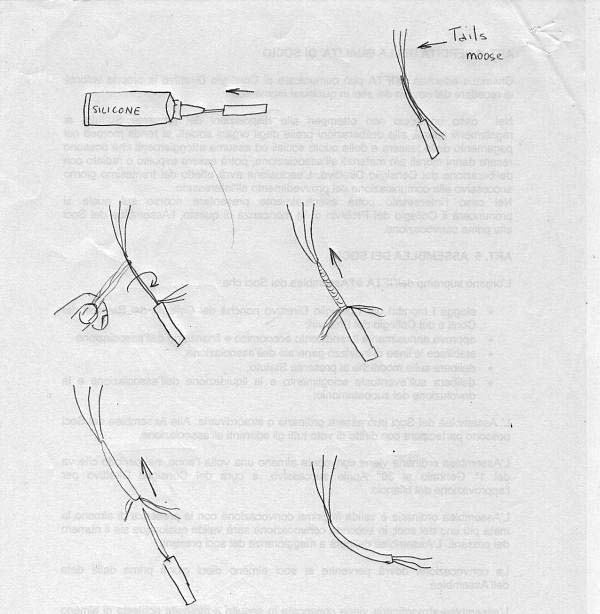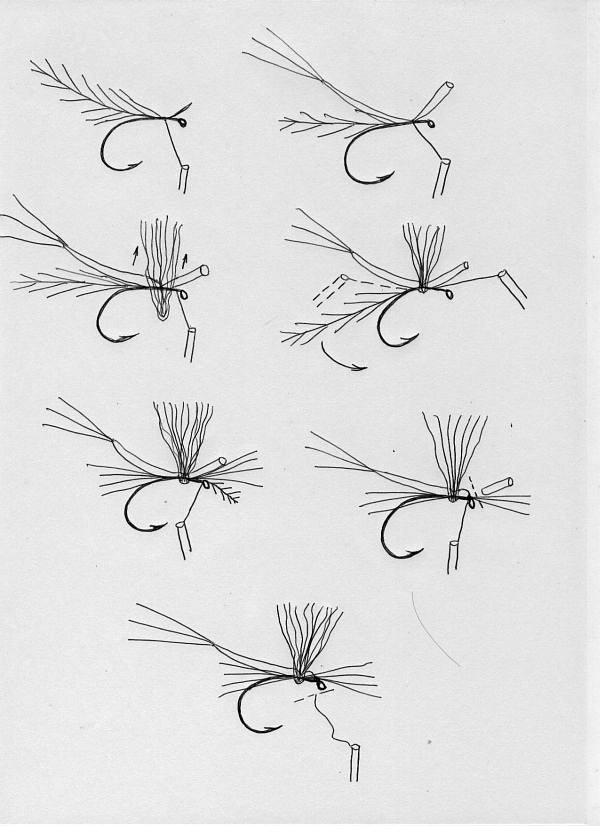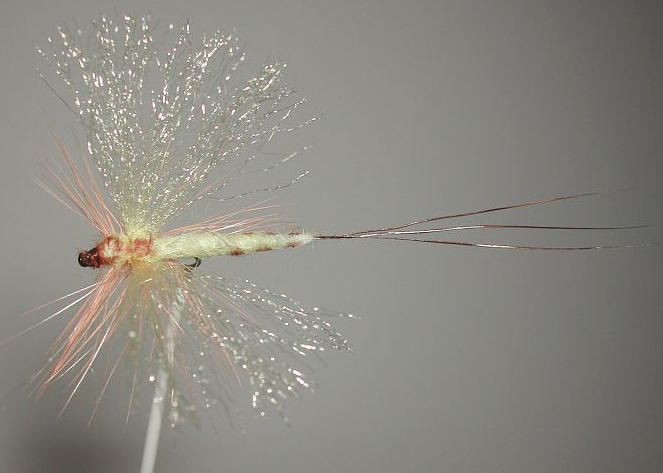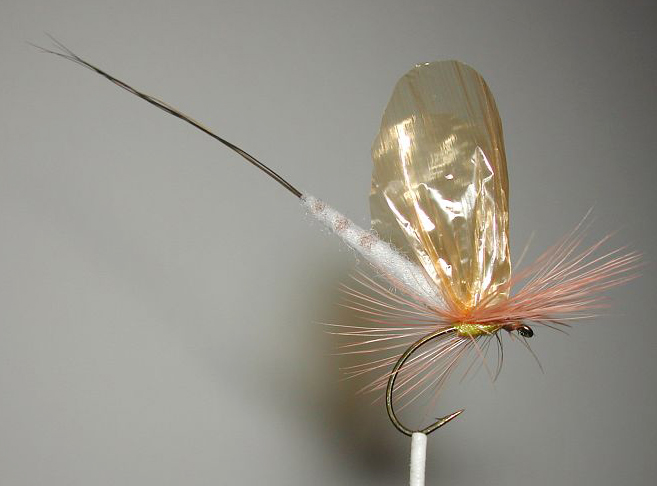EXTENDED TUBE BODY FLIES
By Agostino Roncallo

A few years ago, I met the famous French fly tyer, Jean Louis Teyssié, during a fly tying event. I showed Jean Louis some of my fly tying methods and he revealed to me the secret of his extended tube body imitations.Teyssiè squeezed a very tiny quantity of transparent silicone, the same used to seal windows, onto a piece of greaseproof paper, then coated silicone onto a bobbin needle around which he was creating the tube body.
Until that day I had never tied a tube body because if I consider myself an innovator, I’m also still a traditionalist. I believe fly tying problems should be solved with the techniques and not with glue.Moreover I prefer not to inhale the solvent present in all types of glue. However as a question of courtesy towards Mr. Teyssiè and also because I’m curious, I tried to make some of them.
I was impressed with the simplicity and the speed with which one obtains tube bodies.
![]()
Back home I bought a tube of transparent silicone and decided to continue the experiment. The tube is sold with a plastic cone. I screwed the cone onto the tube but, unlike Teyssiè, I inserted the fly tying needle into the tube and then slowly removed it. After it had dried I simply peeled off a perfect, hollow tube body. The method worked just as well as Teyssyè‘s, perhaps even better.
Making the preformed tube body:
Lay three moose tails onto the wet silicone on the bobbin needle. Tie in a piece of dubbed thread and wind it lightly back toward the base of the needle forming a cone-shaped body while trapping and covering the tails. The dubbing you use is your choice. Once dry simply slip it off the needle.

Dressing:
- On a grub hook I tie in a cock hackle near the eye
- At the same point I tie in the preformed tube body
- I take a bunch of synthetic winging material such as Sparkle Yarn, fold it in half, put it under the hook and pulling the two halves upwards against the shank, I secure it
- I wind the cock hackle parachute style between the tube body and the hook, tie it off near the eye and trim the surplus hackle.
- I can do two things to eliminate the excess piece of tube. I can cut off the surplus inside the wings or I lower it forward and tie it off near the hook eye and then trim the excess.
- I shape the wings, put in the final knot, and voilà….the fly is ready.

As you can see I created the parachute using the same principle I use to tie the parachute around a strip of folded foam. In this case the tube body becomes the foam strip. The result is always the same: a very strong parachute method.

I often create the tube bodies with fluorescent materials to improve the visibility of the fly in poor light conditions. You can also pattern the abdomen and the head of the fly with a colour fast pen.


One can substitute the cock hackle with a CDC feather in order to obtain a fly which gently caresses the water.

You can also use raffia to form the wing. It is durable, transparent and has sheen.

This imitation is suitable on small hooks as well as big ones to imitate the largest of mayflies.
Agostino Roncallo, Genoa, Italy.


